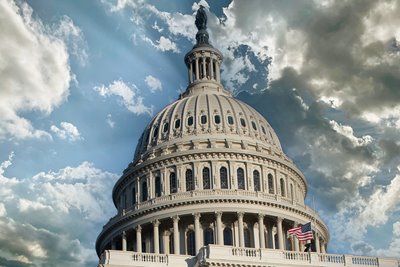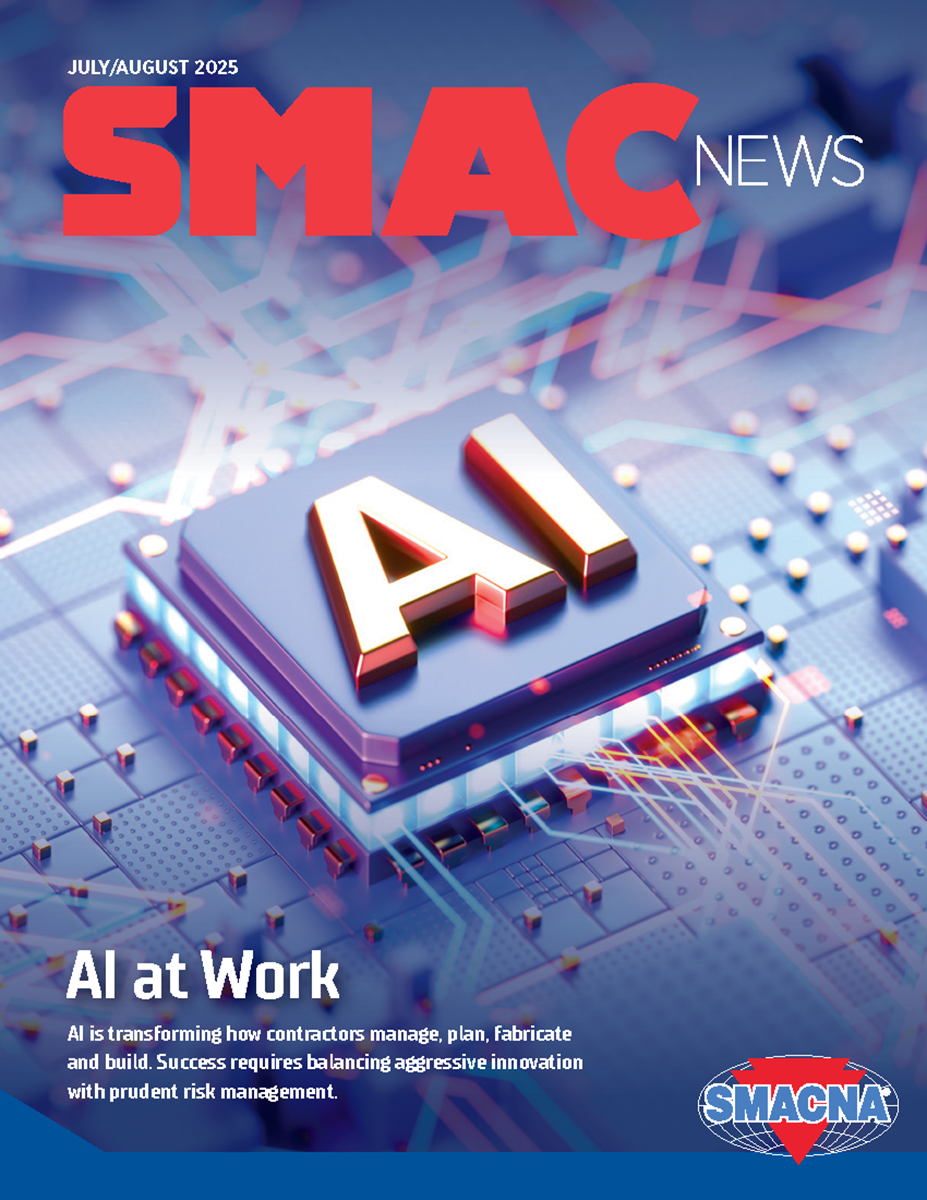What’s in H.R. 1, The New Tax Bill, and What It Means for SMACNA Contractors
 The Congress just passed, and the President signed H.R. 1 into law. This budget and tax law is filled with significant updates and the extension of valued existing provisions for HVAC contractors, equipment suppling firms, building owners and real estate project developers. While tax policy isn’t simple, this bill does include many industry tax incentives most contractors will be familiar with from the 2017 Tax Cuts and Job Act (TCJA). Other incentives will be new, representing significant changes that could impact business growth over the next few years. We are pleased that the new law brings back several SMACNA-endorsed and advocated tax incentives and extends others, some of which were on the verge of ending. Below, is outlined what’s in the bill, why it matters and what each section could mean for your bottom line.
The Congress just passed, and the President signed H.R. 1 into law. This budget and tax law is filled with significant updates and the extension of valued existing provisions for HVAC contractors, equipment suppling firms, building owners and real estate project developers. While tax policy isn’t simple, this bill does include many industry tax incentives most contractors will be familiar with from the 2017 Tax Cuts and Job Act (TCJA). Other incentives will be new, representing significant changes that could impact business growth over the next few years. We are pleased that the new law brings back several SMACNA-endorsed and advocated tax incentives and extends others, some of which were on the verge of ending. Below, is outlined what’s in the bill, why it matters and what each section could mean for your bottom line.
Bill Highlights for SMACNA Contractors and Clients:
- Bonus Depreciation (100%) Restored – Deduct 100% of qualifying property costs in the year placed in service, including past projects, to boost cash flow and tax savings.
- Section 179 Expensing Expanded – Instantly expense up to $2.5 million in equipment or property purchases with new, higher limits and inflation adjustments.
- Section 179D Energy-Efficient Deduction – Claim up to $5.00 per square foot for energy upgrades in new builds and renovations. This applies to both private owners and public building designers. The bill keeps the incentive in place but only until the end of 2026 when it ends.
- The Advanced Manufacturing Investment Tax Credit is increased from 25% to 35% for technology-related projects, often Chip plants, started by the end of 2026.
- Section 45L Home Energy Credit – The incentive survived efforts to kill it, so homeowners get $2,500 to $5,000 per unit for building energy-efficient single-family or multifamily housing until the end of 2026.
- Section 174/174A R&E Deduction Reinstated – Immediately deduct domestic R&D expenses instead of amortizing over five years, retroactive to 2022.
- Section 41 R&D Tax Credit Enhanced – Continue claiming 6% to 20% credit on qualified research while also deducting those same costs under Section 174A.
- Estate Tax Ceiling Raised – A permanent increase in the unified credit and GSTT exemption threshold from $10 million to $15 million per individual, indexed for inflation.
- SALT Allowance – Temporarily increases in the SALT cap to $40,000 from $10,000 with limitations until 2030 when the $10,000 threshold returns.
- The Section 199A deduction is made permanent at the deduction rate of 20%. Further, it limits the phase-in range for certain businesses by increasing the amount from $50,000 to $75,000 for non-joint tax returns and from $100,000 to $175,000 for joint returns.
- Excess Business Losses – The new Act makes permanent the excess business loss limitation allowed to the amount of aggregate gross income or gain attributable to trades or businesses of the taxpayer plus a threshold amount indexed for inflation ($313,000).
- Section 45U, Zero-Emission Nuclear Power PTC – Not modified; credit allowed through Dec. 31, 2032.
SMACNA also appreciates the reconciliation process for demonstrating support for:
- The deductibility of employer-sponsored health insurance.
- Maintaining without changes the business state and local tax (SALT) deduction.
- Sustaining current law concerning treatment of the tax-free status of municipal bonds.
Published: August 28, 2025
IN THIS ISSUE
A SMART Partnership
SMACNA's President reflects on his long history of collaboration with SMART General President Michael Coleman.
AI in Construction: Navigating Opportunities and Risks for SMACNA Contractors
These next few years will be important for the construction industry, as artificial intelligence transforms key elements of how contractors operate.
ARCHITECTURAL: Crafting a Custom Vision in Steel
Thompson Solutions Group brought Plan Architecture’s wood-look steel façade to life at Little Priest Tribal College, combining precision, speed and SMACNA-backed expertise.
Artificial Intelligence: An Introduction
Since late 2022, when ChatGPT was introduced, we’ve been hearing more and more about AI, usually with more hype than explanation.
HVAC: Welded With Precision, Driven by Purpose
MechOne builds more than ductwork as it shapes the future of Colorado’s HVAC industry.
INDUSTRIAL: Leading the Charge
Toronto Sheet Metal Contractors Association member Black & McDonald installed HVAC systems and duct for Ontario’s first electric vehicle battery plant. The work required extensive communication with numerous trades.
Making AI Work: Tips & Tricks for Contractors
We are in the midst of another technology revolution, one as important as the internet or mobile phones, with artificial intelligence (AI) tools becoming increasingly accessible and practical for contractors of all sizes.
Progress, Partnerships and Possibility
SMACNA's CEO examines some of the association's work in critical subject matter areas.
RESIDENTIAL: How Zipf-Air Boosted Profits by Going Residential
By flipping his business model and focusing on customer service, high-end brands and Indoor Air Quality, John Zipf turned a commercial-heavy HVAC company into a thriving residential operation.
Trump Backs Biden-Era EO Mandating PLAs for Large Federal Construction Projects
In a surprising continuation of his predecessor’s labor policy, President Donald Trump’s administration announced on June 12, 2025
Welcome New SMACNA Members
What’s in H.R. 1, The New Tax Bill, and What It Means for SMACNA Contractors
Workforce Evolution Trends: What Construction Leaders Should Know
The dynamics of the construction labor workforce are shifting, fueled by a growing labor shortage, evolving employee expectations and a sizable portion of the workforce nearing retirement.


